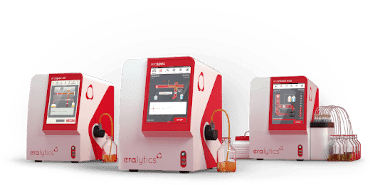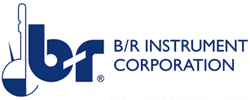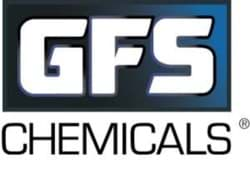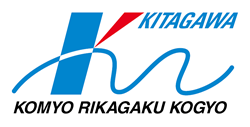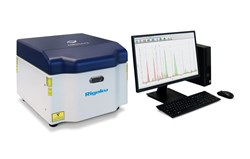NEX CG II, a powerful second-generation energy dispersive X-ray fluorescence (EDXRF) spectrometer, delivers rapid qualitative and quantitative determination of major and minor atomic elements in a wide variety of sample types — from oils and liquids to solids, metals, polymers, powders, pastes, coatings, and thin films.
The Rigaku NEX CG II is a multi-element, multi-purpose analyzer, ideal for measuring ultra-low and trace element concentrations into the percent levels. Especially well-suited for semi-quantitative determination of elemental content in complete unknowns, NEX CG II serves many industries. Applications range from research and development to industrial and in-plant quality assurance. It is easy to use for non-technical operators yet powerful enough for expert use in commercial labs and R&D facilities. Users can achieve the lowest limits of detection and easily manage complex applications like testing agricultural soils, and plant materials, analyzing finished animal feeds, measuring waste oils, environmental monitoring, and many others.
Features
- Non-destructive elemental analysis for sodium (Na) to uranium (U)
- Quick elemental analyses of solids, liquids, powders, coatings, and thin films
- Indirect excitation for exceptionally low detection limits
- High-power 50 kV 50 W X-ray tube
- Large-area high-throughput silicon drift detector (SDD)
- Analysis in air, helium, or vacuum
- Powerful and easy to use QuantEZ® software with multilingual user interface
- Advanced RPF-SQX Fundamentals Parameters software featuring Scattering FP
- Rigaku Profile Fitting (RPF) advanced algorithm for peak deconvolution
- Various automatic sample changers accommodating up to 52 mm samples
- Low cost of ownership
Cartesian Geometry and polarization for trace level sensitivity
NEX CG II builds on NEX CG’s legacy of using Cartesian Geometry and secondary targets for trace level sensitivity. NEX CG II features a unique and improved close-coupled Cartesian Geometry optical kernel that dramatically increases signal-to-noise ratio and delivers enhanced elemental analysis.
Unlike conventional EDXRF spectrometers, NEX CG II is an indirect excitation system using secondary targets rather than tube filters. Monochromatic and polarized excitation from secondary targets vastly improves detection limits for elements in highly scattering matrices like water, hydrocarbons, and biological materials. Secondary target excitation in full 90° Cartesian Geometry eliminates background noise. As a result, NEX CG II brings a new level of analytical sensitivity to XRF technology. Users can measure ultra-low and trace element concentrations, even in challenging sample types.
NEX CG II achieves this superior analytical power with a 50 kV 50 W end-window palladium-anode X-ray tube, five secondary targets covering the complete elemental range sodium through uranium (Na – U), and a high-throughput large-area silicon drift detector (SDD). This unique optical kernel, combined with Rigaku’s advanced RPF-SQX Fundamental Parameters software, delivers the most sensitive EDXRF measurements in the industry.
Easy instrument control with advanced qualitative and quantitative analytical software
NEX CG II is easy to use with QuantEZ®, a powerful PC-based software providing intuitive instrument control with simple menu navigation and a customizable EZ Analysis interface. Users can maximize their time and productivity with simplified routine operations and create their own methods using a simple flow bar wizard.
Advanced qualitative and quantitative analysis is powered by Rigaku’s RPF-SQX Fundamental Parameters (FP) software, featuring Rigaku Profile Fitting (RPF) technology and Scattering FP. This robust integrated software allows semi-quantitative analysis of almost all sample types without standards — and rigorous quantitative analysis with standards. Rigaku’s Scattering FP method automatically estimates the concentration of unmeasurable low atomic number elements (H to F) and provides appropriate corrections.
Calibration standards can be expensive and difficult to obtain for many applications. With RPF-SQX, the number of required standards is greatly reduced, significantly lowering the cost of ownership and reducing workload requirements for running routine analyses.
| Technique |
X-ray fluorescence (XRF) |
| Benefit |
Elemental analysis of solids, slurries, liquids, powders, alloys, coatings, and thin films |
| Technology |
Cartesian geometry energy dispersive XRF (EDXRF) using a large-area high-throughput SDD detector |
| Core attributes |
50 W, 50 kV X-ray tube, SDD detector, analyze Na to U |
| Software |
QuantEZ® for control of spectrometer functions and data analysis |
| Core options |
Vacuum, helium purge, sample trays, sample spinner tray, external PC with Microsoft® Windows® operating system, UPS, RPF-SQX Fundamental Parameters, other software features |
| Core dimensions |
46.3 (W) x 49.2 (D) x 38.2 (H) cm |
| Mass |
Approx. 65 kg (core unit) |
| Power requirements |
1Ø, 100/220 VAC 50/60 Hz, 3.8/1.6 A |
There are no reviews yet
Recently viewed products
Rigaku NEX CG II, Next-Generation Cartesian Geometry Energy Dispersive X-Ray Fluorescence Spectrometer
| SKU | PSC-47-14792 |
| MPN | 1029484 |
